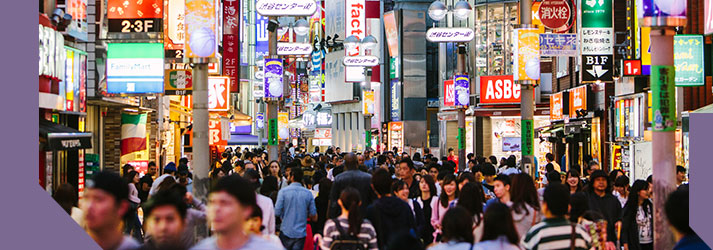The Nikkei 225 Index posted steady growth during October, underpinned by a strengthening domestic economy, and reached levels last seen in 1996. Investor sentiment was boosted by the victory of incumbent Prime Minister Shinzo Abe in a snap General Election. Policymakers at the Bank of Japan maintained their monetary policy stance at their October meeting.
- Japan’s inflationary backdrop remained anaemic
- Strong growth in South Korea fuelled expectations of an interest-rate increase
- Australia suffered political upheaval during the month
“The Nikkei 225 Index was driven up to levels last seen in 1996”
The Nikkei 225 Index posted steady growth during October, underpinned by a strengthening domestic economy and wider optimism about the global outlook. The benchmark index was driven up to levels last seen in 1996 following confirmation that Japan’s incumbent Prime Minister, Shinzo Abe , had won a clear victory in a snap General Election, providing the ruling Liberal Democratic Party (LDP) coalition with a fresh mandate to tackle “national crises”, including mounting aggression from North Korea. The yen weakened against the US dollar , providing support for Japanese exporters.
During October, the Nikkei 225 Index rose by 8.1%, while the Topix Index climbed by 5.4%. The share price of car manufacturer Nissan dipped sharply following the news that the company had suspended domestic vehicle production amid concerns over its inspection processes. The TSE Second Section Index - representing medium-sized companies – rose by 3.4%.
Policymakers at the Bank of Japan (BoJ) maintained their monetary policy stance at their October meeting. The BoJ believes that medium- to long-term inflation expectations will increase as companies move towards raising wages and prices; therefore, inflation is predicted to strengthen towards the 2% target. The country’s core rate of inflation rose at an annualised rate of 0.7% during September, but remained unchanged from the previous month.
Australia faced political turmoil during October following a High Court ruling that the country’s Deputy Prime Minister’s dual citizenship made him ineligible to sit as a member of the House of Representatives. The decision removed the Government’s one-seat majority . The Reserve Bank of Australia (RBA) maintained its key interest at 1.5% during October, having last changed its stance in August 2016 , when it implemented a cut of 0.25 percentage points. However, RBA Governor Philip Lowe issued a cautionary note about the Australian dollar’s continued strength, which is helping to suppress inflation. Over October, the ASX All Ordinaries Index rose by 4%.
South Korea’s economy posted strong quarterly growth of 1.4% during the third quarter, expanding by 3.6% on an annualised basis. Although concerns about North Korean aggression dampened sentiment, overall growth was boosted by strong demand for semiconductors. The better-than-expected growth stoked speculation that the Bank of Korea might seek to implement an increase in interest rates, having left its key rate unchanged at 1.25% at its most recent monetary policy meeting. The Kospi Index rose by 5.4% during October.















